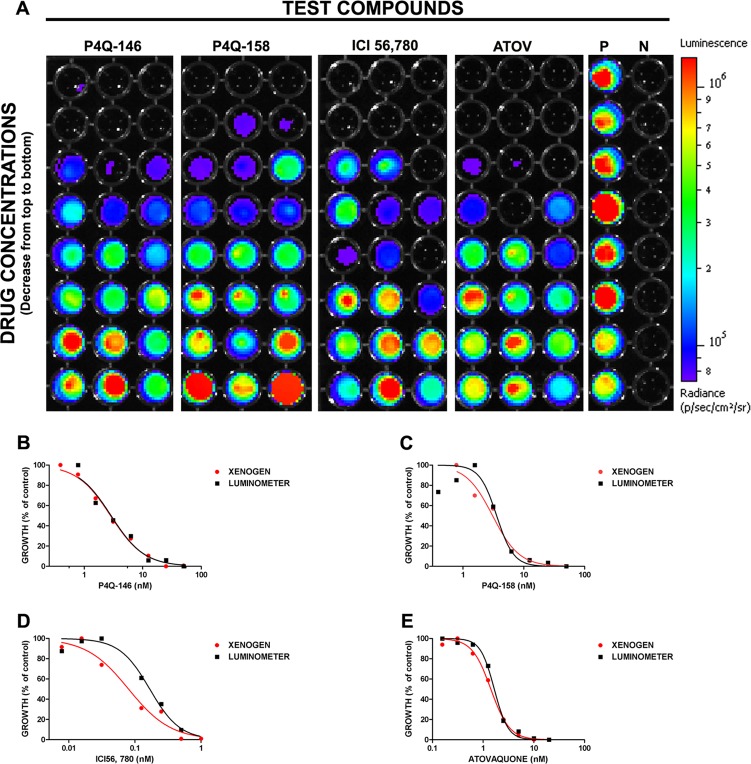Fig 2.
In vitro BLI analysis of the activity of ICI 56,780, P4Q-146, and P4Q-158 against Plasmodium berghei liver stage parasites. HepG2 cells (75,000 per well) were infected with Pb1052 Cl1 sporozoites (5,000 per well). The infected cells were treated with a series of eight 3-fold dilutions of each compound in triplicate. Concentrations started at 50 ng/ml for both P4Q-146 and P4Q-158, 1 ng/ml for ICI 56,780, and 20 ng/ml for atovaquone. At 44 h postexposure, plates were analyzed using the Xenogen IVIS spectrum. (A) All of the compounds with the exception of chloroquine (CQ) were active against Plasmodium berghei parasites in vitro. IC50s for ICI 56,780, P4Q-146, and P4Q-158 were 0.08, 2.82, and 3.07 nM, respectively. As expected, atovaquone (ATOV; positive drug control) was active against the liver stage parasites with an IC50 of 1.42 nM. Infected but untreated cells were used as a positive control (P), and noninfected HepG2 cells were used as a negative control (N). (B to E) Sigmoidal plots used to obtain IC50s from the Xenogen IVIS spectrum and luminometer data for atovaquone (B), ICI 56,780 (C), P4Q-146 (D), and P4Q-158 (E) are shown.

